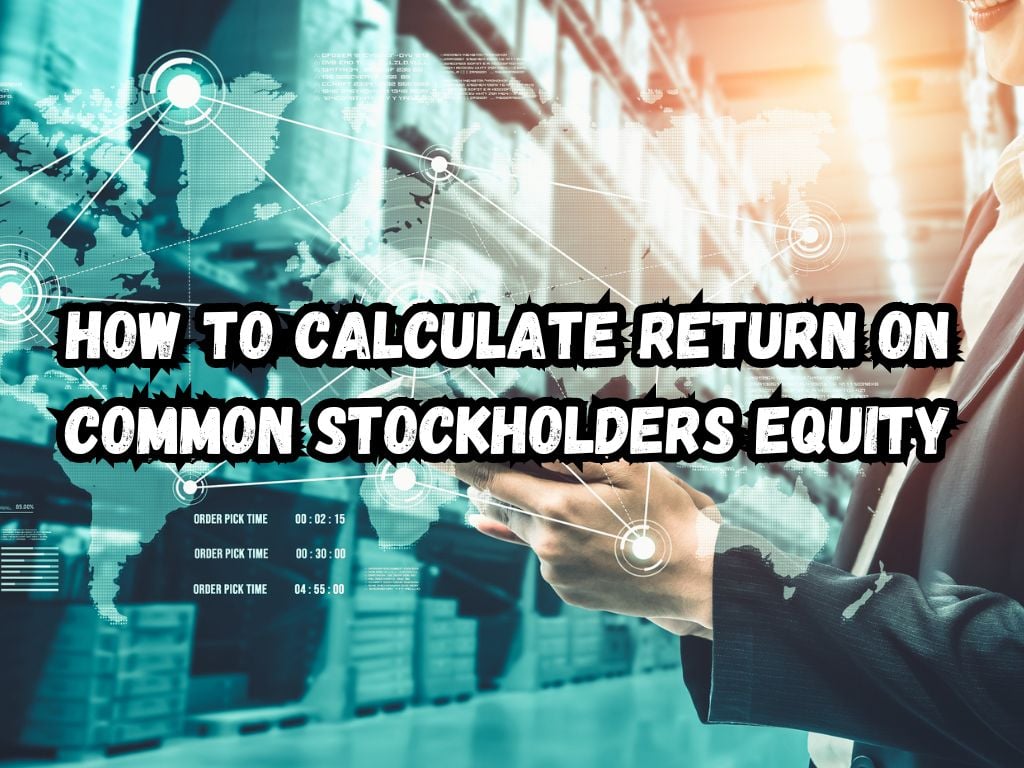Investigating the financial health of a business leads us to numerous metrics and ratios, each shedding light on different aspects of the company’s performance. Among these, the Return on Common Stockholders’ Equity (ROCE) stands out as a pivotal measure.
This metric captures how efficiently a firm transforms the equity invested by its common shareholders into net income.
Designed as an essential primer, this article delves deep into the nuances of ROCE, guiding you through its significance, the process of how to calculate return on common stockholders equity, and insightful interpretations.
In the realm of financial analysis, ROCE is more than just a percentage—it’s a window into the operational effectiveness of a business. It uniquely focuses on common shareholders, disregarding preferred shares and other forms of equity.
This direct approach provides a clear view of the returns these investors can expect on their investment, making it an invaluable tool for anyone looking to gauge a company’s performance from a shareholder’s perspective.
How to Calculate Return on Common Stockholders Equity – Understanding the Basics
The Fundamentals
Before embarking on calculating ROCE, familiarizing yourself with a few key concepts is crucial. Net Income is the profit a company earns after all its costs, expenses, and taxes have been subtracted from total revenue.
Shareholders’ Equity pertains to the owners’ claim after debts have been cleared, essentially what the shareholders “own.” Unlike other financial metrics that might consider total assets or total equity, ROCE narrows the focus to common stockholders, offering a more targeted insight.

ROCE Versus Other Metrics
ROCE’s unique value lies in its exclusion of preferred dividends and focus on common stock, distinguishing it from broader measures such as Return on Equity (ROE) or Return on Assets (ROA).
This distinction is crucial for accurately assessing how efficiently a company’s core equity is being put to work, free from the influence of debt and preferential claims.
How to Calculate ROCE
Delving into the calculation of ROCE reveals a straightforward, albeit meticulous process. It begins with identifying the Net Income, typically located prominently on the income statement.
The next step involves computing the Average Shareholders’ Equity over a given period—achieved by averaging the beginning and ending equity figures, as found on the company’s balance sheet. It’s essential to adjust the net income for preferred dividends—if present—to ensure the focus remains on common equity.
A Practical Example
Consider a hypothetical company with a net income of $200,000, preferred dividends totaling $30,000, and shareholders’ equity starting at $1,000,000 and ending at $1,200,000 for a given fiscal year. Here’s how the calculation would unfold:
- Adjust net income for preferred dividends: $200,000 – $30,000 = $170,000.
- Determine average shareholders’ equity: ($1,000,000 + $1,200,000) / 2 = $1,100,000.
- The ROCE would then be: ($170,000 / $1,100,000) * 100 = 15.45%.
This result indicates that for every dollar of common shareholder equity, the company generated a return of nearly 15.5 cents.
Interpreting ROCE Values
Understanding what constitutes a “good” ROCE requires context. A high ROCE signifies superior utilization of common equity, but this figure should be interpreted against industry averages and historical performance.
Remember, a ROCE that is substantially higher than sector peers might indicate not only operational excellence but also potential financial leverage or risk factors that merit closer examination.
Common Pitfalls in ROCE Analysis
A critical mistake in analyzing ROCE is making direct comparisons across different industries without acknowledging the varying capital structures and operational models.
For instance, comparing the ROCE of a tech start-up with that of a manufacturing giant could lead to misleading conclusions. Acknowledging these sector-specific nuances is crucial for a fair and insightful analysis.
Tips for Improving ROCE
For businesses aspiring to uplift their ROCE, the dual approach of optimizing net income and efficiently managing equity comes into play.
Enhancing operational efficiency and keeping a tight rein on expenses will directly benefit net income. Simultaneously, strategic financial management aimed at optimizing the equity base can further magnify ROCE.
Tools and Resources for Calculating ROCE
In today’s digital age, a slew of software and online platforms offer simplified, automated solutions for calculating financial metrics like ROCE. These tools can fetch necessary financial statements and compute the metric with minimal user input.
Nevertheless, understanding the underlying principles of ROCE calculation remains invaluable for anyone serious about financial analysis.

Frequently Asked Questions
Is a higher ROCE always better?
While a higher ROCE is generally desirable, indicating more effective use of equity, excessively high figures should be analyzed for underlying factors like high financial leverage, which could introduce additional risk.
How often should ROCE be calculated?
An annual calculation of ROCE is standard practice, offering a clear view of yearly performance. For more granular analysis, quarterly calculations can provide insights into shorter-term operational efficiency.
Can ROCE be negative, and what does it mean?
A negative ROCE, where a company incurs a loss or has negative shareholder equity, signals operational challenges. Such a scenario necessitates a thorough review to identify and address the underlying issues impacting profitability.
Conclusion
Embarking on the journey to understand and analyze ROCE is akin to equipping oneself with a critical lens through which the financial efficacies of companies can be discerned.
This guide has aimed to demystify the nuances of calculating and interpreting ROCE, laying a foundation for insightful financial analysis.
As we look towards 2023 and beyond, the principles enumerated ere will continue to serve as a beacon for investors, analysts, and business leaders aiming to unlock deeper insights into operational performance and shareholder value.


 Tags:
Tags:










